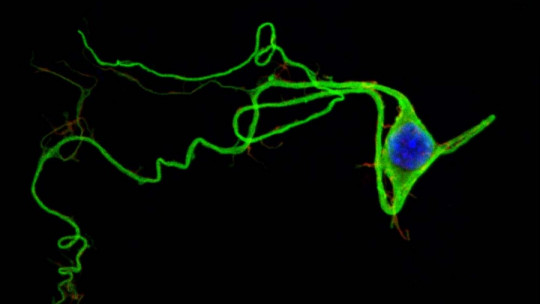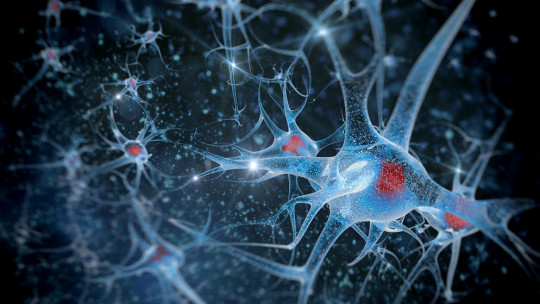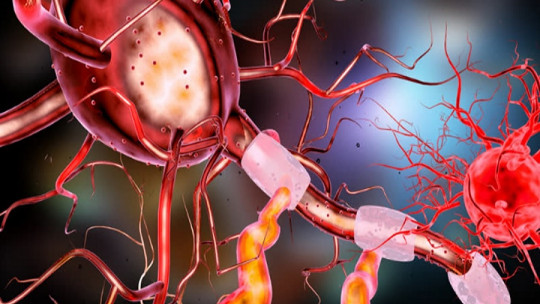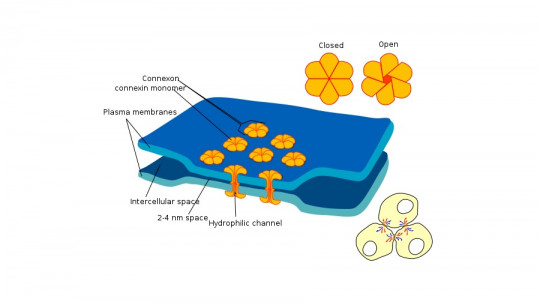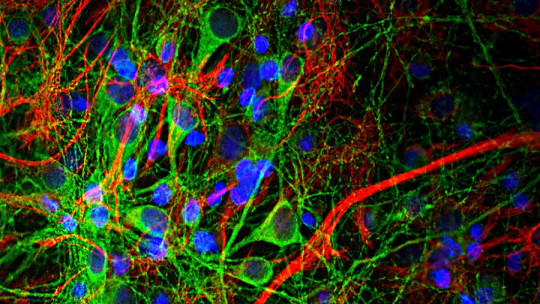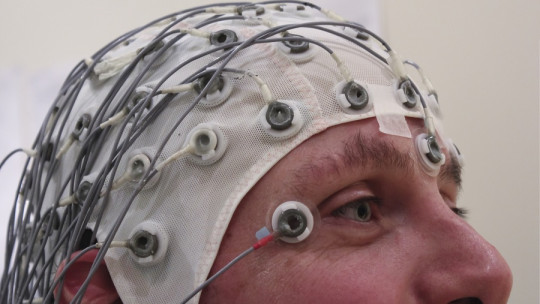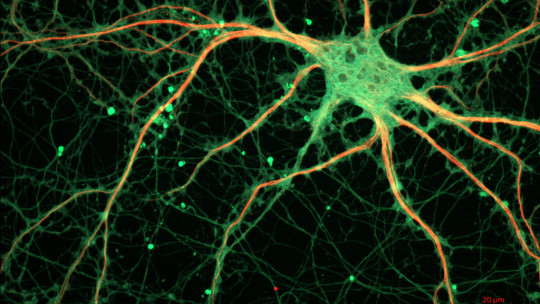Neurons are the basic unit of our nervous system and, thanks to their work, it is possible to transmit the nervous impulse so that it reaches brain structures that allow us to think, remember, feel and much more.
But these neurons are not transmitting impulses all the time. There are times when they rest. It is during those moments that it occurs resting membrane potential a phenomenon which we explain in more detail below.
What is membrane potential?
Before understanding in more depth how the resting membrane potential is produced and, also, how it is altered, it is necessary to understand the concept of membrane potential.
For two nerve cells to exchange information It is necessary for them to modify the voltage of their membranes, which will result in an action potential. That is, an action potential is understood as a series of changes in the membrane of the neuronal axon, which is the elongated structure of neurons that serves as a cable.
Changes in membrane voltage also imply changes in the physicochemical properties of this structure. This allows changes in the permeability of the neuron, making the entry and exit of certain ions more easily and difficultly.
Membrane potential is defined as the electrical charge on the membrane of nerve cells. It is the difference between the potential between the inside and outside of the neuron
What is resting membrane potential?
The resting membrane potential is a phenomenon that occurs when the membrane of nerve cells is not altered by action potentials, neither excitatory nor inhibitory. The neuron does not signal, that is, it is not sending any type of signal to other nerve cells to which it is connected and, therefore, it is in a resting state.
The resting potential It is determined by the concentration gradients of the ions both inside and outside the neuron, and the permeability of the membrane by allowing these same chemical elements to pass, or not.
When the neuron membrane is in a resting state, the inside of the cell has a more negative charge relative to the outside. Normally, in this state, the membrane has a voltage close to -70 microvolts (mV). That is, the inside of the neuron has 70 mV less than the outside, although it is worth mentioning that this voltage can vary between -30 mV and -90 mV. Furthermore, at this time there are more sodium ions (Na) outside the neuron and more potassium ions (K) inside it
How is it produced in neurons?
The nervous impulse is nothing more than the exchange of messages between neurons by electrochemical means. That is, when different chemical substances enter and leave the neurons, altering the gradient of these ions in the internal and external environment of the nerve cells, electrical signals are produced As ions are charged elements, changes in their concentration in these media also imply changes in the voltage of the neuronal membrane.
In the nervous system the main ions that can be found are Na and K, although calcium (Ca) and chlorine (Cl) also stand out. Na, K and Ca ions are positive, while Cl is negative. The nerve membrane is semipermeable, selectively letting some ions in and out.
Both outside and inside the neuron, ion concentrations try to balance; However, as has already been said, the membrane makes this difficult, since it does not allow all the ions to leave or enter in the same way.
In the resting state, K ions cross the neuronal membrane with relative ease, while Na and Cl ions have more problems passing through. During this time, the neuronal membrane prevents the exit of negatively charged proteins to the neuronal exterior. The resting membrane potential is determined by the non-equivalent distribution of ions between the inside and outside of the cell.
An element of fundamental importance during this state is the sodium-potassium pump. This structure of the neuronal membrane serves as a regulatory mechanism for the concentration of ions inside the nerve cell. It works in such a way that For every three Na ions that leave the neuron, two K ions enter This causes the concentration of Na ions to be higher on the outside and the concentration of K ions to be higher on the inside.
Changes in the membrane at rest
Although the main topic of this article is the concept of membrane potential at rest, it is necessary to explain, very briefly, how changes in membrane potential occur while the neuron is resting. In order for the nerve impulse to occur, the resting potential must be altered. There are two phenomena that occur so that the electrical signal can be transmitted: depolarization and hyperpolarization.
1. Depolarization
In a resting state, the inside of the neuron has an electrical charge compared to the outside.
However, if electrical stimulation is applied to this nerve cell, that is, receiving the nerve impulse, a positive charge is applied to the neuron. When receiving a positive charge, the cell becomes less negative with respect to the outside of the neuron almost with zero charge, and, therefore, the membrane potential is decreased.
2. Hyperpolarization
If in the resting state the cell is more negative than the outside and, when it depolarizes, it does not have a significant difference in charge, in the case of hyperpolarization it happens that the cell has a more positive charge than its outside.
When the neuron receives several stimuli that depolarize it, each of them causes the membrane potential to change progressively
After several of them, it reaches the point that the membrane potential changes a lot, making the electrical charge inside the cell very positive, while the outside becomes negative. The resting membrane potential is exceeded, causing the membrane to be more polarized than normal or hyperpolarized.
This phenomenon occurs for about two milliseconds After that very short period of time, the membrane returns to its normal values. The rapid reversal in the membrane potential is, in itself, what is called action potential and is what causes the transmission of the nerve impulse to occur, in the direction of the axon to the terminal button of the dendrites.

